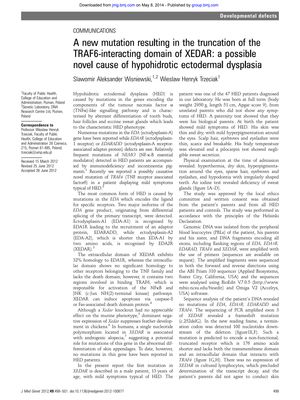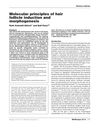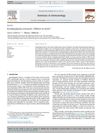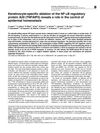A New Mutation Resulting in the Truncation of the TRAF6-Interacting Domain of XEDAR: A Possible Novel Cause of Hypohidrotic Ectodermal Dysplasia
August 2012
in “
Journal of Medical Genetics
”

TLDR A new mutation in the XEDAR gene might cause a rare skin condition called hypohidrotic ectodermal dysplasia.
The document describes the identification of a new mutation in the XEDAR gene, which may be a novel cause of hypohidrotic ectodermal dysplasia (HED). The study focused on a 13-year-old male with mild HED symptoms, who was part of a group of 47 HED patients. Genetic testing revealed a unique frameshift mutation (c.252delG) leading to a truncated XEDAR protein that cannot interact with TRAF6, impairing the NFKB pathway essential for the development of skin appendages. This mutation was not present in other HED patients, healthy controls, or the 1000 genomes database, and was absent in the patient's family, indicating a possible de novo occurrence. The research suggests that EDA-A2/XEDAR signaling defects might contribute to HED and emphasizes the need for further studies to assess the prevalence and impact of XEDAR mutations in HED.





